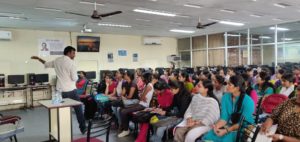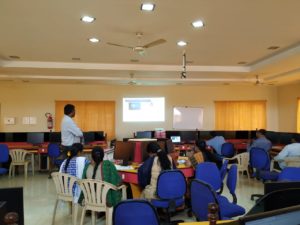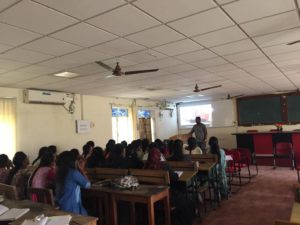I am a practitioner, a teacher, an avid learner, and I am equally passionate about being all three. In fact, what helps me be one, is being the other two.
Over the last two years, I have been teaching, training and mentoring; right from rendering guest lectures (for few hours), conducting workshops (spanning over a few days) to taking industrial elective courses (lasting a few months). All dealing with Machine Learning, Text Mining, and Visualisation Applications. I constantly strive to achieve a perfect blend between theory and application, for any concept or technique. My sole objective is to make learning engaging, therefore, most impactful.




I start with a case study, a very relatable application in everyday life. I prefer not to talk of Irises or the Titanic. I talk in the context of email spam, shampoo, mobiles etc. My job, as a teacher, is to both intrigue and fascinate the students. Fascination is the key to learning. Nothing helps students learn better than to start with a sense of intrigue, wonder, or curiosity about a topic.
‘We learn more by looking for the answer to a question and not finding it than we do from learning the answer itself.’ – Lloyd Alexander
Once that is established, I introduce the theoretical /conceptual understanding. I, then, throw it open to the group to come up with applications in their respective area of work. By now, they are curious to know the underlying Mathematics and Statistics. Now comes the practical aspect of learning and I cannot possibly emphasise more on its significance.
The first task is to make something seem interesting. Learning is, then, a by-product. Someone walking you through the steps of learning something does not work — you never really learn anything when you just listen to someone tell you how something works. You learn when you try to do that ‘something’ — putting it into action. That is when the real learning begins and the superficial learning ends — when you try something and fail, and adjust and try again, and solve countless little problems, along the way.
I am sure you would agree with this. For example, you can learn as much French vocabulary as you like, but until you start holding conversations, you would not learn how to apply that vocabulary. Similarly, I may tell you a hundred things about Data Science, but you would not understand how to apply that knowledge unless you do. What I can tell you is everything starts with small and easy steps.
- Let me reiterate the sequence:
- (Start) find a very relatable application
- learn how it can be applied in one’s own area of work
- comprehend the underlying Mathematics & Statistics
- practice on dummy data sets
- practice on real-time data sets/micro POCs (End)
I would advise everyone to take up teaching, in whatever form possible. There is no better way to cement your knowledge than to teach it to others. To teach you have to take what you have absorbed, reflect upon it, find a way to organize it so that you can communicate it to someone else clearly enough for them to understand it, see their mistakes, and help correct them. In all this, you begin to see another perspective, another dimension you have never seen before. Do try it out, I am sure there are enough opportunities to embark upon.



